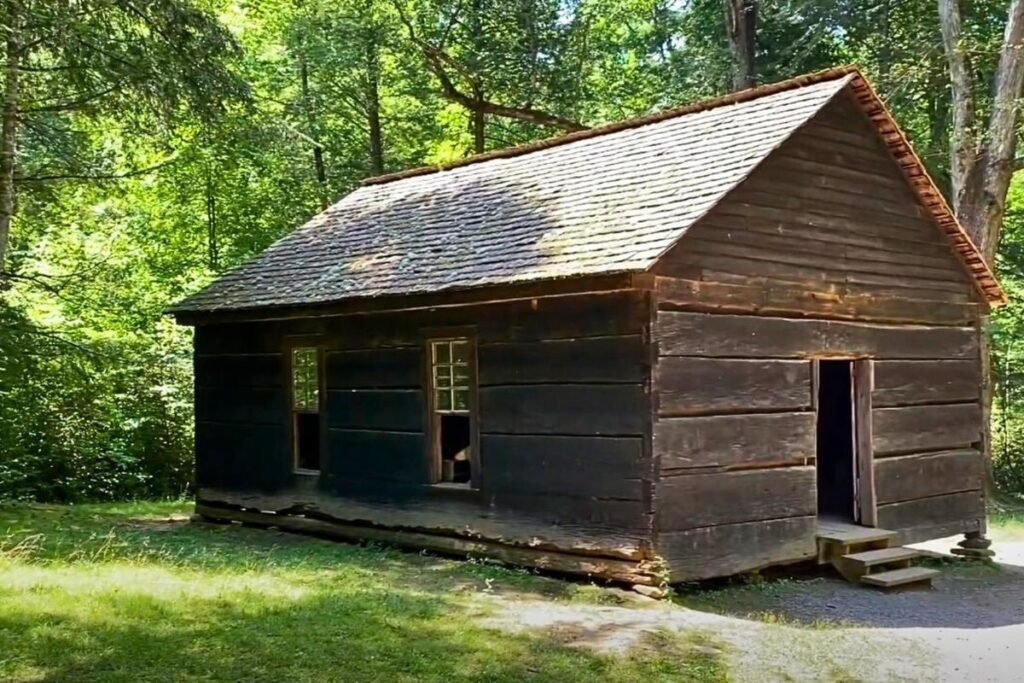Echoes of the Past: The Little Schoolhouses and Cemeteries of Great Smoky Mountains National Park
There’s something hauntingly beautiful about stumbling upon a little old schoolhouse with an adjacent cemetery while hiking through the mist-shrouded valleys of the Great Smoky Mountains National Park. As someone who’s spent years exploring these ancient mountains, I still get goosebumps every time I encounter these poignant remnants of the past. They tell a story that many visitors never fully understand – the tale of the mountain communities that called this wilderness home long before it became America’s most visited national park.
The Mountain Communities Before the Park
When Great Smoky Mountains National Park was established in 1926, these misty mountains weren’t the uninhabited wilderness many assume. The hollows and valleys were dotted with thriving communities – farmers, loggers, and self-sufficient families who had carved out lives among these ancient hills for generations.
I’ve spent countless hours researching these communities, walking the same paths they once traveled, and standing in the doorways of their abandoned homes. It’s like stepping back in time, feeling the echoes of lives lived in harmony with these mountains.
The Little Schoolhouses: Centers of Mountain Life
The one-room schoolhouses you might encounter while exploring the park weren’t just places of education – they were the beating hearts of these mountain communities. Built from local timber by community members, these humble structures served multiple purposes:
- Educational centers where children learned reading, writing, and arithmetic
- Community gathering places for social events and celebrations
- Meeting halls for local governance and decision-making
- Sometimes even houses of worship on Sundays
The Little Greenbrier School near Metcalf Bottoms is one of my favorite examples still standing today. Built in 1882, its rough-hewn logs and simple design speak to the practical nature of mountain life. Standing in that quiet room, I can almost hear the recitation of lessons and the scratch of chalk on slate.
A Difficult Transition
When the national park was established, these tight-knit communities faced an impossible choice. Many families who had lived on their land for generations were forced to relocate. Some sold their property willingly, seeing opportunity in the change. Others fought to stay, eventually accepting lifetime leases that allowed them to remain until their passing.
I’ve often thought about how heart-wrenching this decision must have been – to leave behind not just homes, but generations of family history, the graves of ancestors, and a way of life intimately connected to these mountains.
The Mountain Cemeteries: Sacred Ground
The small cemeteries you’ll find near these schoolhouses are perhaps the most touching reminders of the park’s human history. Weather-worn headstones, some dating back to the early 1800s, mark the final resting places of the mountains’ former residents.
Unlike the schoolhouses and cabins, these cemeteries remain active sacred spaces. The National Park Service maintains special provisions allowing descendants to care for and even continue burials in these historic family plots. On Decoration Days (similar to Memorial Day), families still gather to clean graves, place flowers, share meals, and keep mountain traditions alive.
Where to Find These Historic Sites
If you’re interested in experiencing these powerful connections to the past, here are some accessible locations where you can find preserved schoolhouses and cemeteries:
| Location | Historic Features | Accessibility |
|---|---|---|
| Cades Cove | Churches, schoolhouse, multiple cemeteries | 11-mile loop road (car, bicycle) |
| Little Greenbrier | Schoolhouse and cemetery | Short hike from Metcalf Bottoms |
| Cataloochee Valley | Palmer Chapel, schoolhouse, cemetery | Gravel road access |
| Elkmont | Historic district, Jakes Creek Cemetery | Short hike from parking area |
Respecting Sacred Spaces
When visiting these sites, I always remind fellow explorers to show proper respect. These aren’t just tourist attractions – they’re sacred spaces holding deep meaning for families whose roots run generations deep in these mountains.
A few guidelines I always follow:
- Never disturb, remove, or rearrange anything at cemetery sites
- Speak quietly and behave respectfully, as you might in any cemetery
- Don’t climb on gravestones or structures
- If you encounter family members visiting graves, give them privacy
Preserving Mountain Heritage
The National Park Service has done remarkable work preserving these cultural treasures alongside the natural wonders of the Smokies. Through careful restoration and documentation, they’ve ensured that the human story of these mountains isn’t lost to time.
I’ve participated in several cemetery decoration days over the years, invited by families I’ve met during my research. The connection these descendants maintain with their mountain heritage is deeply moving – a testament to the enduring spirit of the people who once called these mountains home.
Experience These Living Museums
On your next visit to the Great Smoky Mountains, I encourage you to seek out these poignant reminders of the park’s human history. Stand in the doorway of a mountain schoolhouse, read the weathered inscriptions on cemetery stones, and take a moment to imagine the lives of those who came before.
In the quiet of these mountains, with mist swirling through ancient trees, you might just feel a deeper connection to this special place – not just as a natural wonder, but as a landscape shaped by generations of human hands and hearts.
The next time you’re hiking a quiet trail and come across a small cemetery or weathered schoolhouse, take a moment to pay your respects to the mountain families who called this wilderness home long before it became a national park.
Source: Great Smoky Mountains National Park History & Culture

